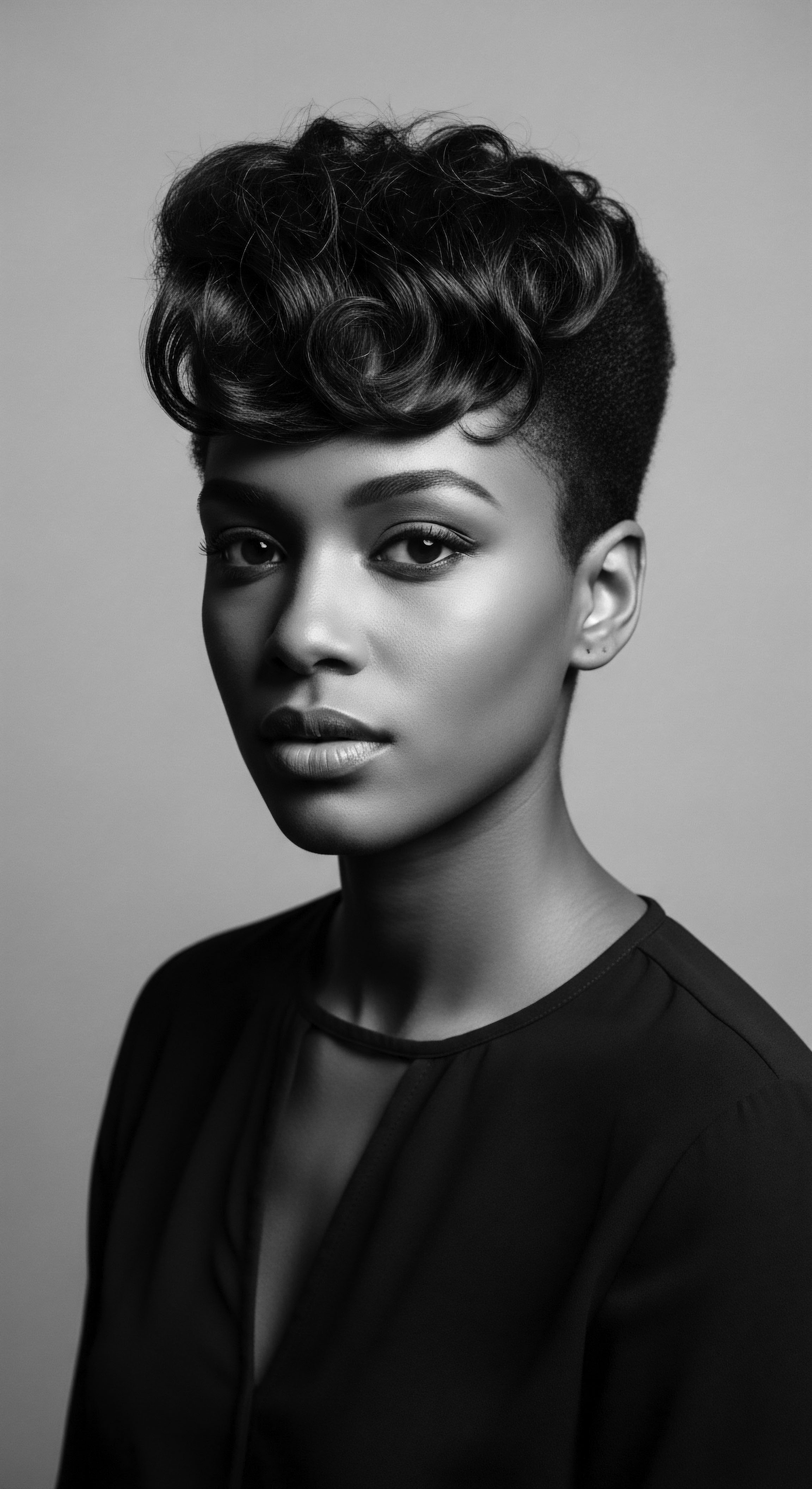
Fundamentals
The term ‘Ancient Hair,’ within Roothea’s living library, reaches far beyond a mere chronological designation; it signifies a profound connection to the inherited wisdom, biological resilience, and cultural memory embedded within textured hair strands. This designation is not simply about hair from a distant past, rather it represents the enduring legacy of ancestral practices, the innate strength of coils and curls, and the deep, communal understanding of hair as a sacred aspect of being. It is a foundational concept for anyone seeking to truly comprehend textured hair care, particularly for those whose lineage traces back to Black and mixed-race communities.
At its core, Ancient Hair speaks to the earliest human interactions with the very fibers that crown our heads, a relationship steeped in reverence and practical knowledge. Archaeological findings from ancient civilizations across Africa, such as Kush and Kemet (present-day Sudan and Egypt), reveal intricately carved combs of wood, bone, and ivory interred with their owners, serving as poignant testaments to the profound significance hair held in these societies. These artifacts were not simply tools for grooming; they were symbols of status, expressions of tribal identity, and even spiritual conduits. The understanding of hair as a vital component of one’s identity and communal belonging, dating back millennia, forms the bedrock of Ancient Hair’s meaning.
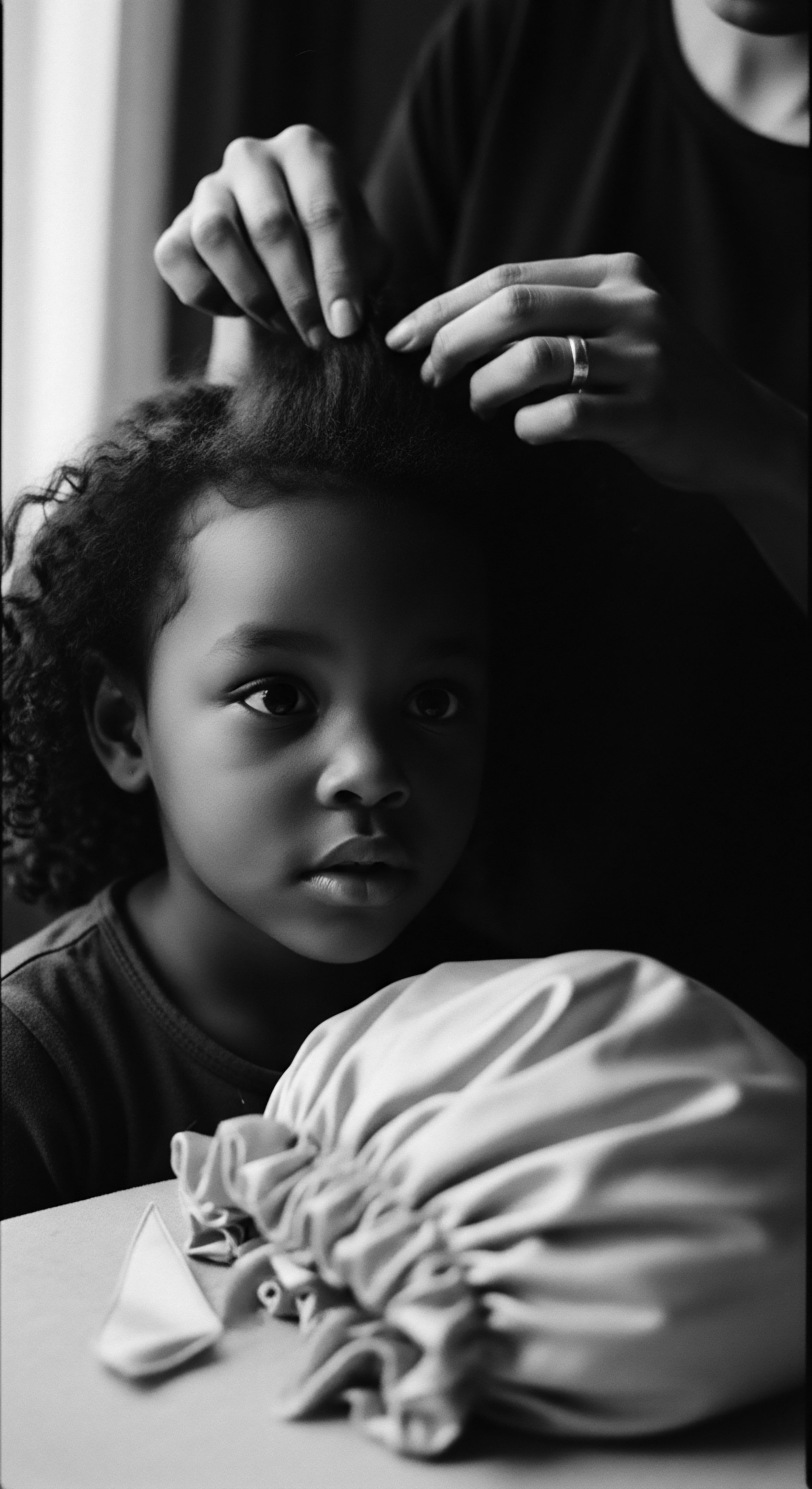
The Elemental Connection ❉ Hair as a Living Archive
From the dawn of human civilization, hair was perceived as a living archive, a repository of personal and collective history. Its growth, texture, and styling communicated a myriad of social cues ❉ age, marital status, spiritual beliefs, and even a person’s role within their community. This understanding was not abstract; it was woven into the daily rhythms of life.
The very act of caring for hair, often a communal endeavor, served to reinforce familial bonds and transmit generational knowledge. This intimate connection between hair and human experience highlights the inherent value placed upon every strand, recognizing its capacity to carry stories across vast stretches of time.
Ancient Hair embodies the deep ancestral wisdom and inherent resilience woven into every coil and curl, serving as a living testament to cultural heritage.
Early communities, particularly those in West and West Central Africa, including the Wolof, Mende, Mandingo, and Yoruba societies, integrated hair into the very fabric of their cultural existence. Hair conveyed multiple meanings and was believed to hold spiritual powers. The diversity of textures, from the kinky curls of the Mandingos to the looser patterns of the Ashanti, was acknowledged and celebrated, with each clan or tribe possessing its own distinctive styles that identified geographic origins. These ancient practices offer a profound lesson in appreciating the natural state of textured hair, recognizing its inherent beauty and its capacity for communication long before modern definitions emerged.
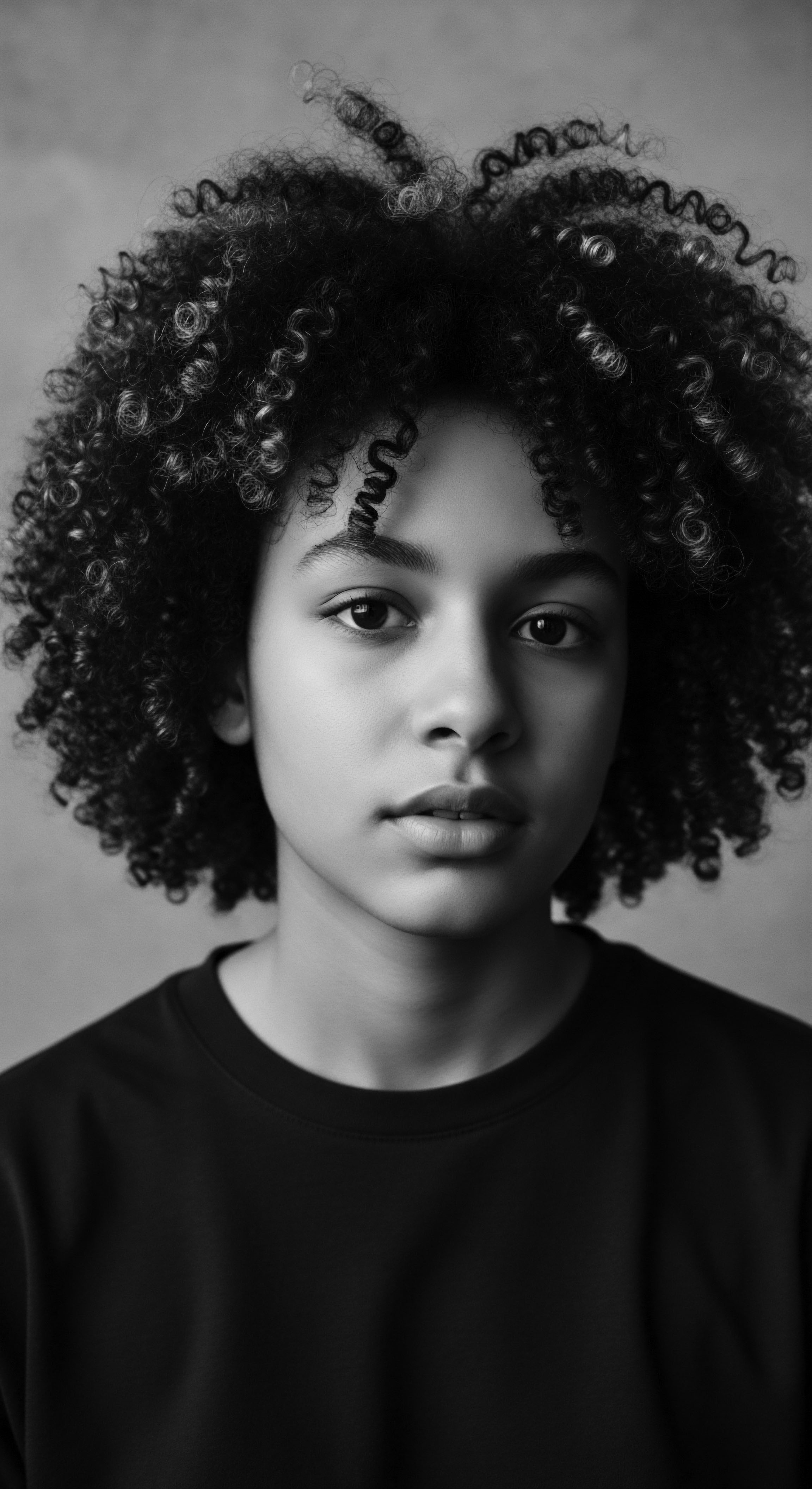
Biological Foundations and Early Adornment
The biological properties of textured hair, its natural elasticity and ability to retain moisture, were instinctively understood by ancestral populations. They developed sophisticated methods of care and adornment that worked harmoniously with these inherent characteristics. Natural ingredients, sourced from the earth, were the primary tools for nourishment and styling.
Early forms of hair adornment, including beads, shells, and even precious metals, transformed hair into a canvas for artistic expression, further solidifying its role as a visual language. This foundational period established a reverence for hair that permeated all aspects of communal life.
- Archaeological Discoveries ❉ Excavations in ancient African sites have unearthed tools and artifacts specifically designed for hair care, indicating sophisticated grooming practices and the high cultural regard for hair.
- Communal Grooming ❉ Hair care was often a shared activity, fostering intergenerational bonding and serving as a means for elders to impart knowledge and stories to younger generations.
- Symbolic Language ❉ Hairstyles conveyed a wealth of information about an individual, including their social standing, marital status, and spiritual affiliations, serving as a non-verbal communication system.
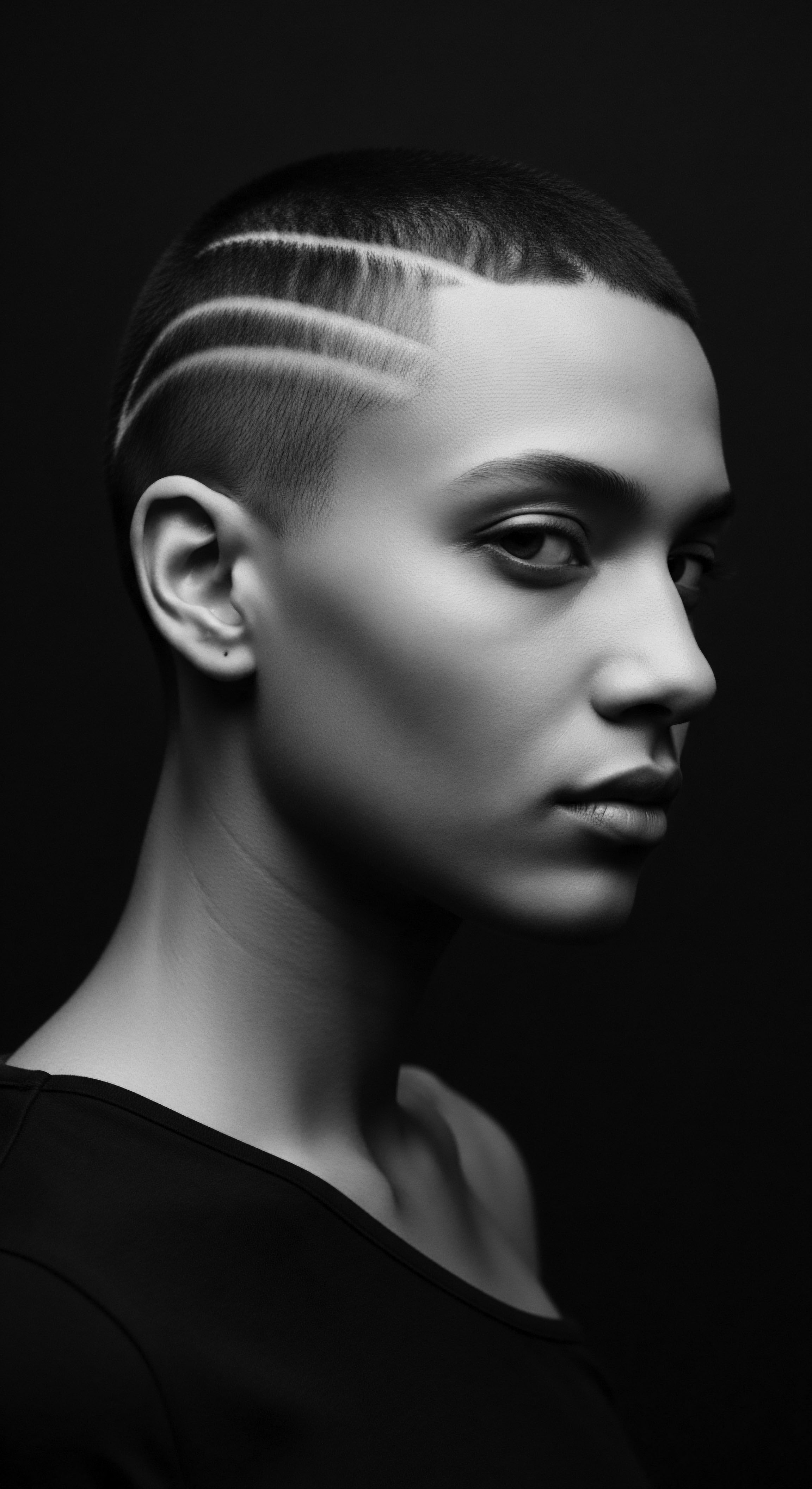
Intermediate
Moving beyond the foundational understanding, the intermediate meaning of ‘Ancient Hair’ delves into how these deeply rooted heritage practices have been meticulously passed down and adapted through generations, particularly within the dynamic context of textured hair communities across the diaspora. This exploration reveals not a static relic, but a living, breathing tradition, continuously shaped by circumstance yet always retaining its ancestral core. The complexity of Ancient Hair expands to encompass the ingenuity and resilience of Black and mixed-race individuals who preserved and innovated hair care rituals despite immense challenges.
Traditional and evolving hair care rituals for textured hair are a testament to the enduring wisdom of our forebears. Practices like hair oiling, cleansing with natural ingredients, and intricate protective styling were not merely aesthetic choices; they were acts of self-preservation, cultural affirmation, and communal solidarity. These methods, often born from necessity and a deep understanding of the hair’s biological needs, demonstrate a sophisticated approach to hair health that predates modern cosmetology. The continuity of this knowledge, often transmitted orally or through observation, speaks volumes about its inherent value and efficacy.
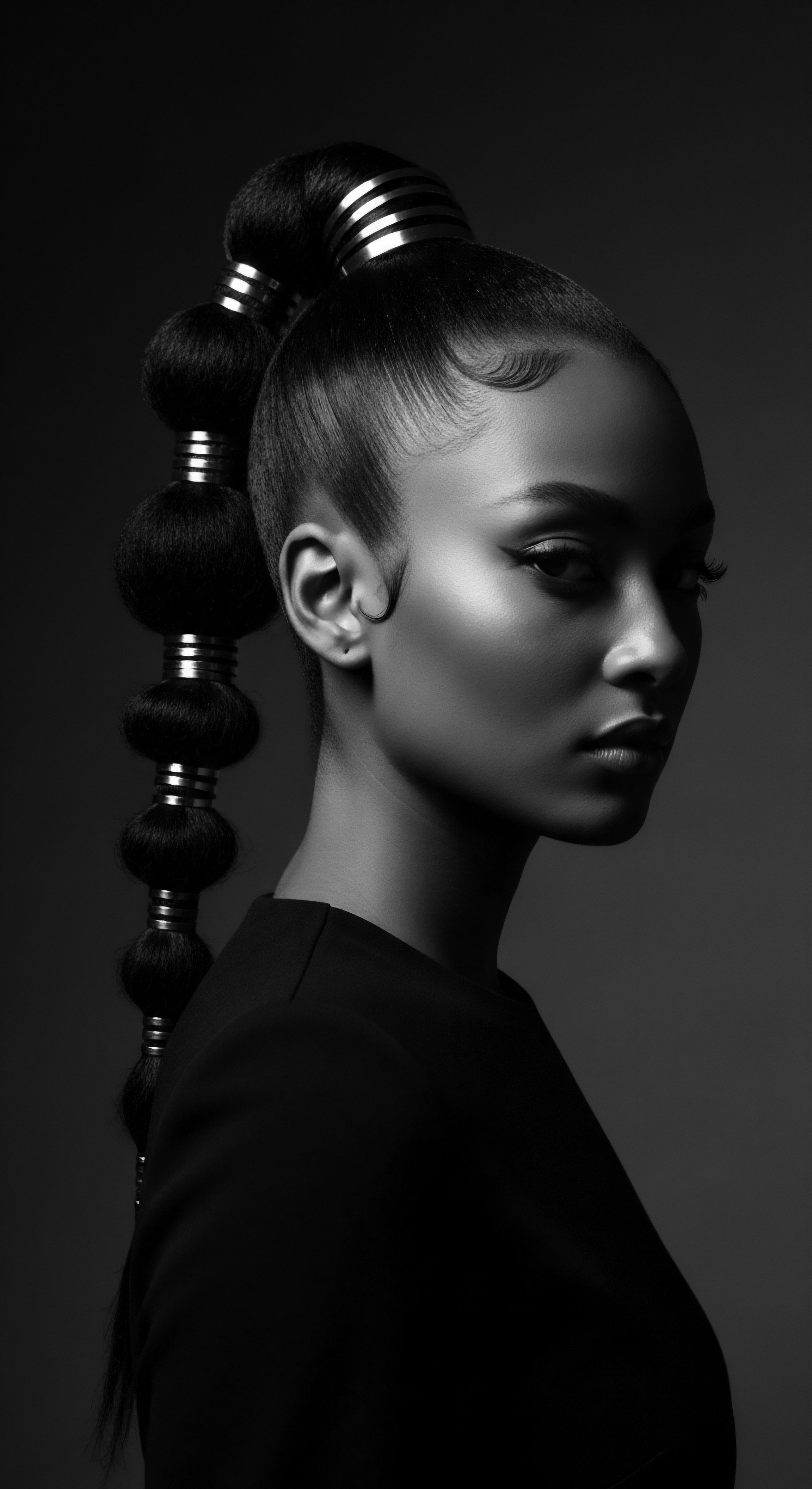
The Tender Thread ❉ Generational Care and Adaptation
The transmission of hair knowledge across generations forms a tender thread connecting past to present. Mothers, grandmothers, aunts, and community elders became the first educators, teaching the nuances of detangling, conditioning, and styling textured hair with patience and wisdom. This communal aspect of hair care fostered intimate bonds, transforming a daily ritual into a cherished moment of connection and cultural instruction. It was in these shared spaces that the deeper significance of Ancient Hair truly came alive, moving beyond biological function to embody cultural identity and collective memory.
Ancestral hair practices, passed down through generations, exemplify a continuous dialogue between tradition and adaptation, preserving cultural identity within textured hair care.
Consider the historical practice of Hair Threading, a technique deeply rooted in various African cultures for centuries. This method, often called “African threading” or “Ethiopian threading,” involves wrapping sections of hair tightly with cotton or synthetic thread from root to tip. This process gently stretches the hair, elongates coils, and protects strands from environmental damage and breakage without the need for heat. This ingenious technique not only styled hair but also served as a protective measure, preserving length and health.
A study on indigenous threaded hairstyles in Ghana, for instance, highlights how these practices are integral to cultural sustainability, revealing distinct threaded styles that carry profound social symbolism (Quampah, 2024). Such historical examples underscore the ingenuity of ancestral communities in devising sophisticated hair care solutions that were both functional and culturally significant.
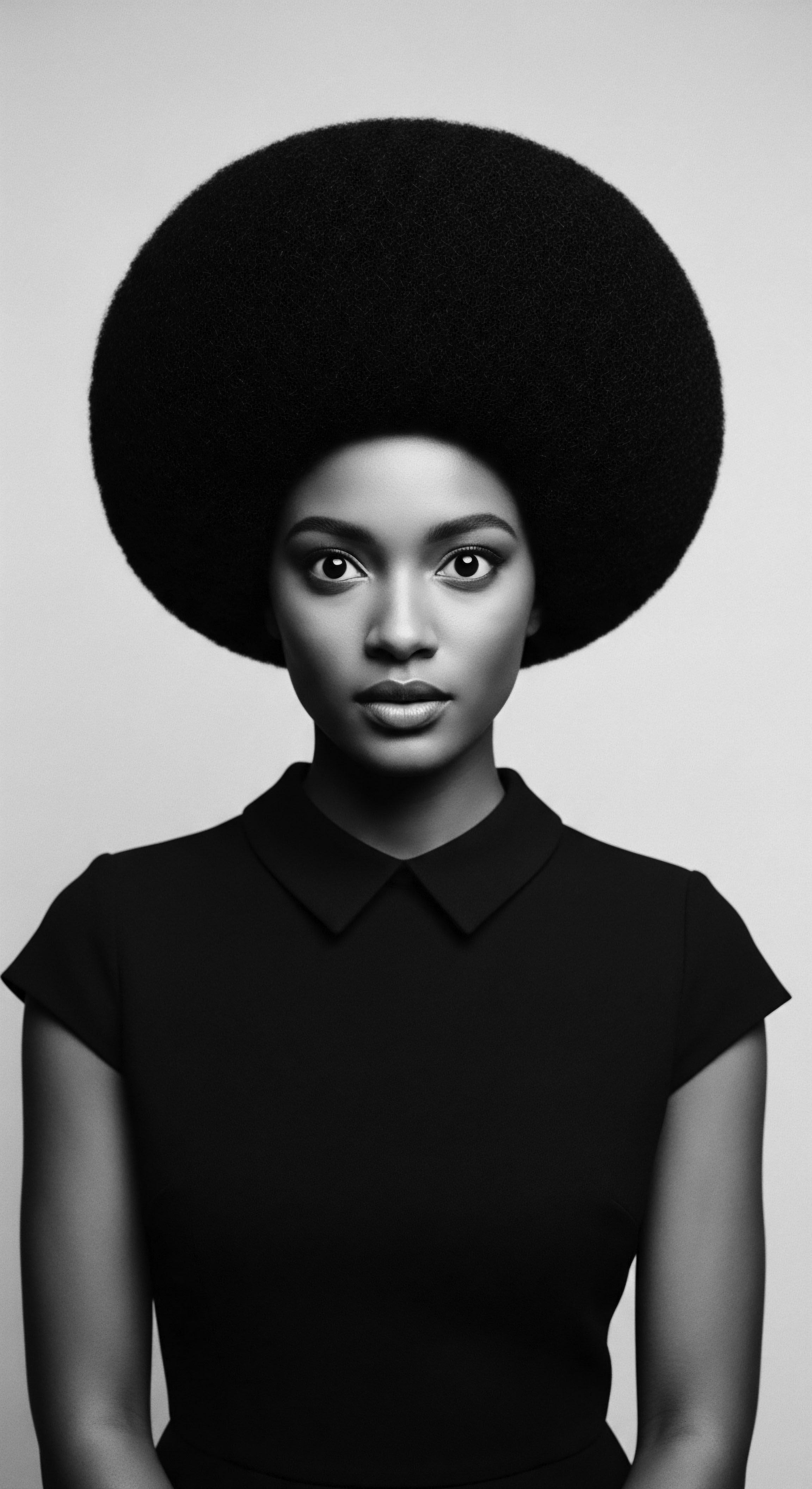
Ingredients from the Earth ❉ Ancestral Remedies
The natural environment provided a rich apothecary for ancient hair care. Ingredients such as shea butter, coconut oil, aloe vera, and various herbs and plant extracts were widely used to nourish, protect, and style textured hair. These remedies, often prepared at home, prioritized moisture and scalp health, laying the groundwork for many contemporary natural hair care principles. The understanding of these ingredients was not scientific in a modern sense, yet their efficacy was proven through centuries of practical application and observation, embodying a profound empirical wisdom.
The selection and application of these ingredients were deeply tied to specific cultural beliefs and regional availability. Different communities developed unique blends and methods, each reflecting their local flora and a nuanced understanding of its properties. This localized knowledge, passed down through oral traditions and hands-on teaching, represents a significant body of heritage.
| Traditional Ingredient Shea Butter (Vitellaria paradoxa) |
| Ancestral Application Moisturizing, softening, scalp health, protective sealant. |
| Contemporary Relevance for Textured Hair Highly valued for deep conditioning, frizz control, and sealing moisture into coils and curls. |
| Traditional Ingredient African Black Soap (various plant ashes/oils) |
| Ancestral Application Gentle cleansing, purifying scalp, treating skin conditions. |
| Contemporary Relevance for Textured Hair Popular as a clarifying shampoo that respects the hair's natural moisture balance, often with conditioning additives. |
| Traditional Ingredient Aloe Vera (Aloe barbadensis miller) |
| Ancestral Application Soothing scalp, promoting growth, conditioning strands. |
| Contemporary Relevance for Textured Hair Used in gels and conditioners for hydration, scalp irritation relief, and curl definition. |
| Traditional Ingredient Chebe Powder (Croton zambesicus, etc.) |
| Ancestral Application Length retention, strengthening hair fibers, reducing breakage. |
| Contemporary Relevance for Textured Hair Gaining recognition for its ability to reduce shedding and promote length retention in textured hair. |
| Traditional Ingredient These traditional ingredients, deeply rooted in ancestral wisdom, continue to offer valuable benefits for textured hair, affirming the timeless efficacy of heritage practices. |
The continuity of these practices, even in the face of colonial pressures and forced assimilation, speaks to their profound cultural meaning. During the transatlantic slave trade, enslaved Africans were often stripped of their traditional tools and forced to shave their heads, a deliberate act of dehumanization. Despite this, they found ways to preserve and adapt their hair care traditions, often using ingenuity to create new tools or secretly share knowledge.
Braids, for example, became more than just a hairstyle; they sometimes served as intricate maps for escape or as a means to conceal rice seeds for survival (BLAM UK CIC, 2022). This resilience highlights the intrinsic connection between Ancient Hair and the unwavering spirit of those who carried its heritage forward.
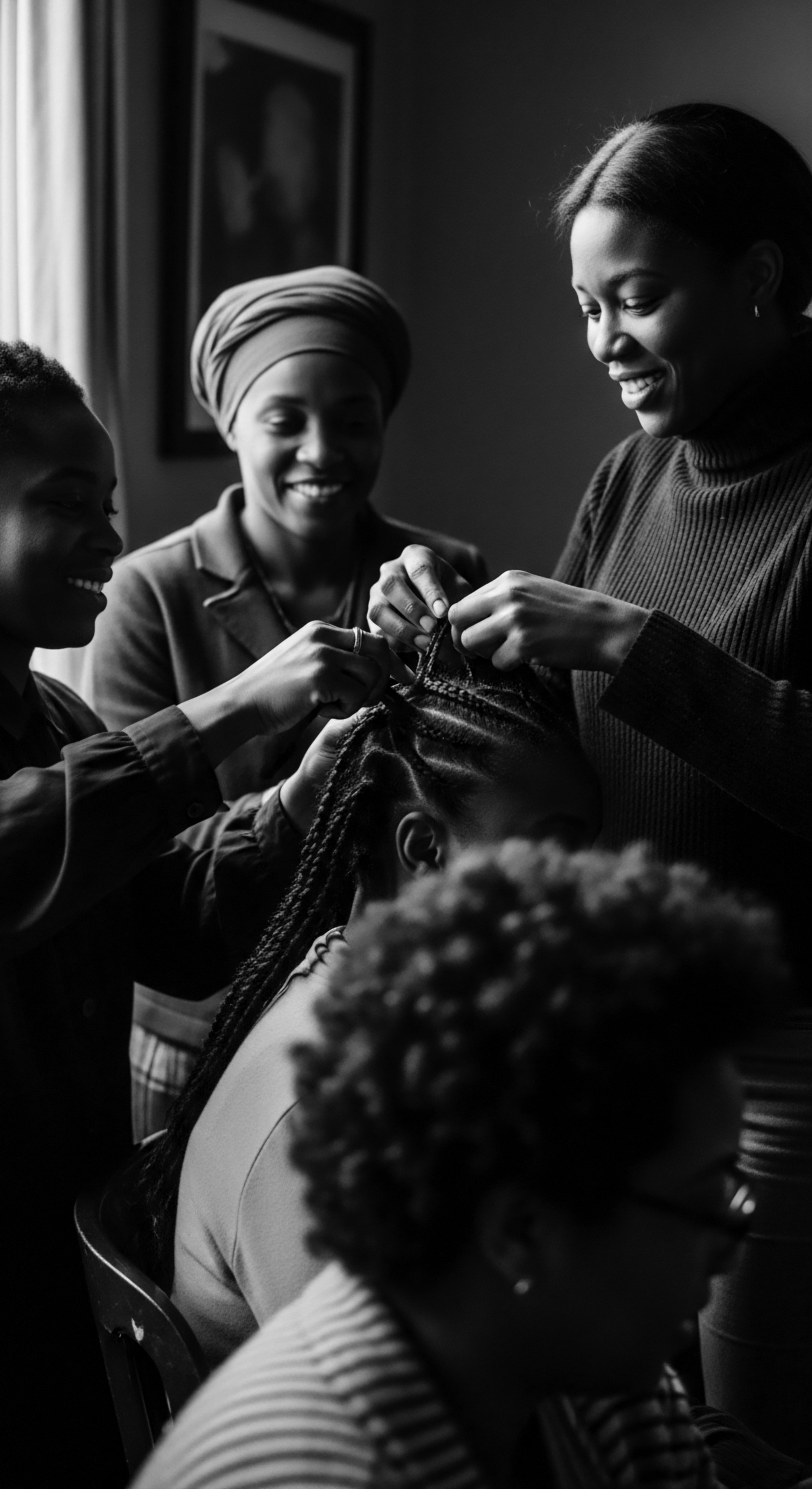
Academic
The advanced understanding of ‘Ancient Hair’ transcends simple historical recounting, instead demanding a sophisticated, expert-level analysis of its profound meaning within the context of textured hair, Black hair, and mixed-race hair heritage. This exploration delves into the ongoing evolution of these traditions and their compelling scientific validation, drawing upon anthropological, historical, and biological perspectives. Ancient Hair, from this vantage point, represents a complex interplay of genetic inheritance, cultural continuity, and psychological resonance, forming a deeply insightful explication of its full significance and enduring implications.
The concept of Ancient Hair, at this advanced level, becomes a theoretical construct that encapsulates the biological specificity of textured hair types alongside the rich tapestry of human ingenuity applied to their care and adornment. It invites us to consider the unique follicular structure of coily and kinky hair, its inherent strength, and its particular needs for moisture and protection, all of which were instinctively understood and addressed by ancestral practices long before the advent of modern trichology. This recognition positions traditional knowledge not as anecdotal, but as empirically validated science, honed through millennia of lived experience.
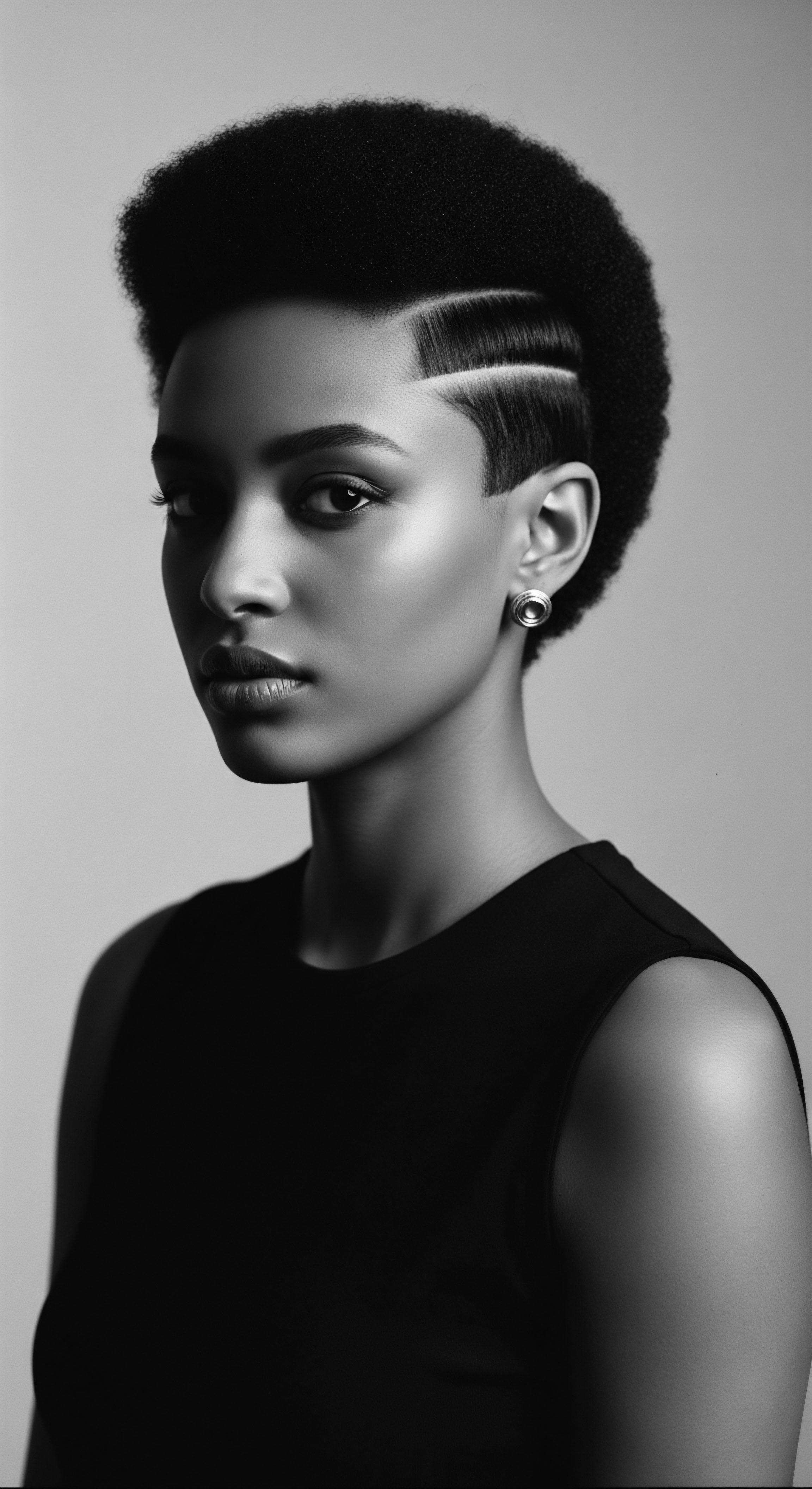
The Unbound Helix ❉ Identity, Resistance, and Genetic Legacy
Ancient Hair, viewed through an academic lens, serves as a powerful symbol of identity and resistance, particularly within the Black diaspora. The forced removal or alteration of hair during slavery was a deliberate strategy to strip individuals of their cultural markers and communal ties, yet the persistence of traditional styles and care rituals became a silent, yet potent, act of defiance. This historical context underscores the psychological and social weight carried by textured hair, rendering it a battleground for self-determination and cultural preservation. The “politics of hair” continue to resonate in contemporary society, where textured hair often faces discrimination in professional and educational settings, a direct legacy of colonial beauty standards (Leidenanthropologyblog, 2017).
Ancient Hair, a complex interplay of biology and culture, represents the enduring resilience and self-determination embedded within textured hair’s ancestral lineage.
From an anthropological perspective, hair served as a critical marker of race and group identity in the African diaspora, often holding more significance than skin color or language (Rosado, 2007). The continuity of specific grooming practices and aesthetic preferences across continents reveals an underlying “grammar of hair” – a shared cultural belief domain that connects diasporic Africans to their ancestral roots. This philosophical approach is essential for understanding the relationship between Africans on the continent and in the diaspora with their hair, and the enduring practices that continue to define their identity (Omotoso, 2018).
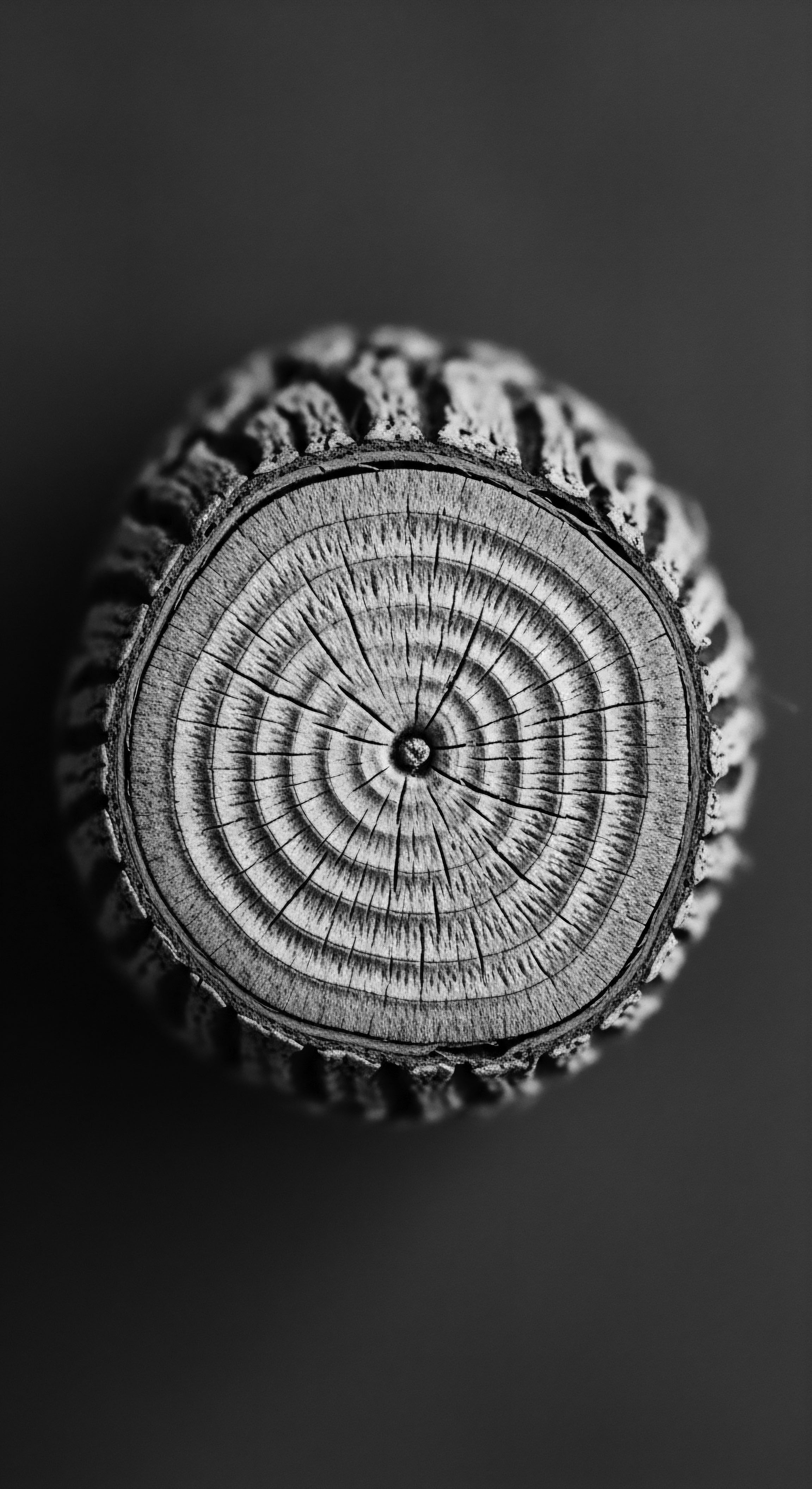
Biological Specificity and Ancestral Solutions
The unique helical structure of textured hair, characterized by its elliptical cross-section and numerous disulfide bonds, contributes to its coily and kinky patterns. This biological specificity, while granting remarkable volume and versatility, also renders it more susceptible to dryness and breakage compared to straighter hair types. Ancestral practices, such as the consistent application of plant-based oils and butters, and the use of protective styles like braids and twists, served as ingenious solutions to these inherent biological challenges. These methods effectively minimized manipulation, retained moisture, and guarded against environmental stressors, demonstrating an intuitive understanding of hair biology.
Modern scientific inquiry increasingly validates these historical approaches. Research in cosmetopoeia, the study of traditional plant-based beauty practices, reveals that many African plants traditionally used for hair care possess properties that promote hair growth, strengthen strands, and address scalp conditions (Adebayo et al. 2024).
For instance, ethnobotanical surveys in various African communities identify numerous plant species used for hair treatment, often showing antioxidant, anti-inflammatory, and moisturizing properties that support hair health at a cellular level. This convergence of ancient wisdom and contemporary scientific understanding offers a compelling testament to the enduring efficacy of heritage practices.
- Hair as a Cultural Map ❉ Intricate braiding patterns and styles served as visual codes, communicating social status, marital status, age, and even religious affiliation within pre-colonial African societies.
- Resistance through Adornment ❉ During periods of oppression, maintaining traditional hairstyles became an act of cultural resistance, a way to reclaim identity and dignity despite forced assimilation.
- Biological Adaptation ❉ Ancestral care methods for textured hair, such as protective styling and natural oil application, were highly effective responses to the unique structural characteristics of coily and kinky hair.
The academic lens also examines the socio-economic implications of Ancient Hair. The historical demonization of textured hair, stemming from colonial ideologies, created a market for hair straightening products and practices that often caused damage. This legacy continues to affect product development and beauty standards within the industry.
A deeper appreciation of Ancient Hair, therefore, extends to advocating for ethical product development, supporting Black-owned businesses, and promoting inclusive beauty standards that honor the full spectrum of textured hair. It calls for a re-evaluation of historical narratives, recognizing the profound contributions of African and diasporic communities to hair care knowledge.
Furthermore, the academic exploration of Ancient Hair considers its role in contemporary movements. The natural hair movement, a global phenomenon, directly connects to this ancient lineage, seeking to reclaim and celebrate the authentic beauty of textured hair. This movement is not merely a trend; it is a profound act of self-acceptance and cultural affirmation, drawing strength from the historical resilience embodied by Ancient Hair. It prompts a re-centering of narratives, placing textured hair heritage at the forefront of beauty, wellness, and identity discussions.
The ongoing study of ancient hair samples, through techniques like chemical analysis, offers unprecedented insights into historical diets, health, and even the use of natural substances for hair care, providing tangible evidence of these long-held traditions (Cosmos Magazine, 2023). This scientific validation further solidifies the authority and value of Ancient Hair as a living, historical entity.
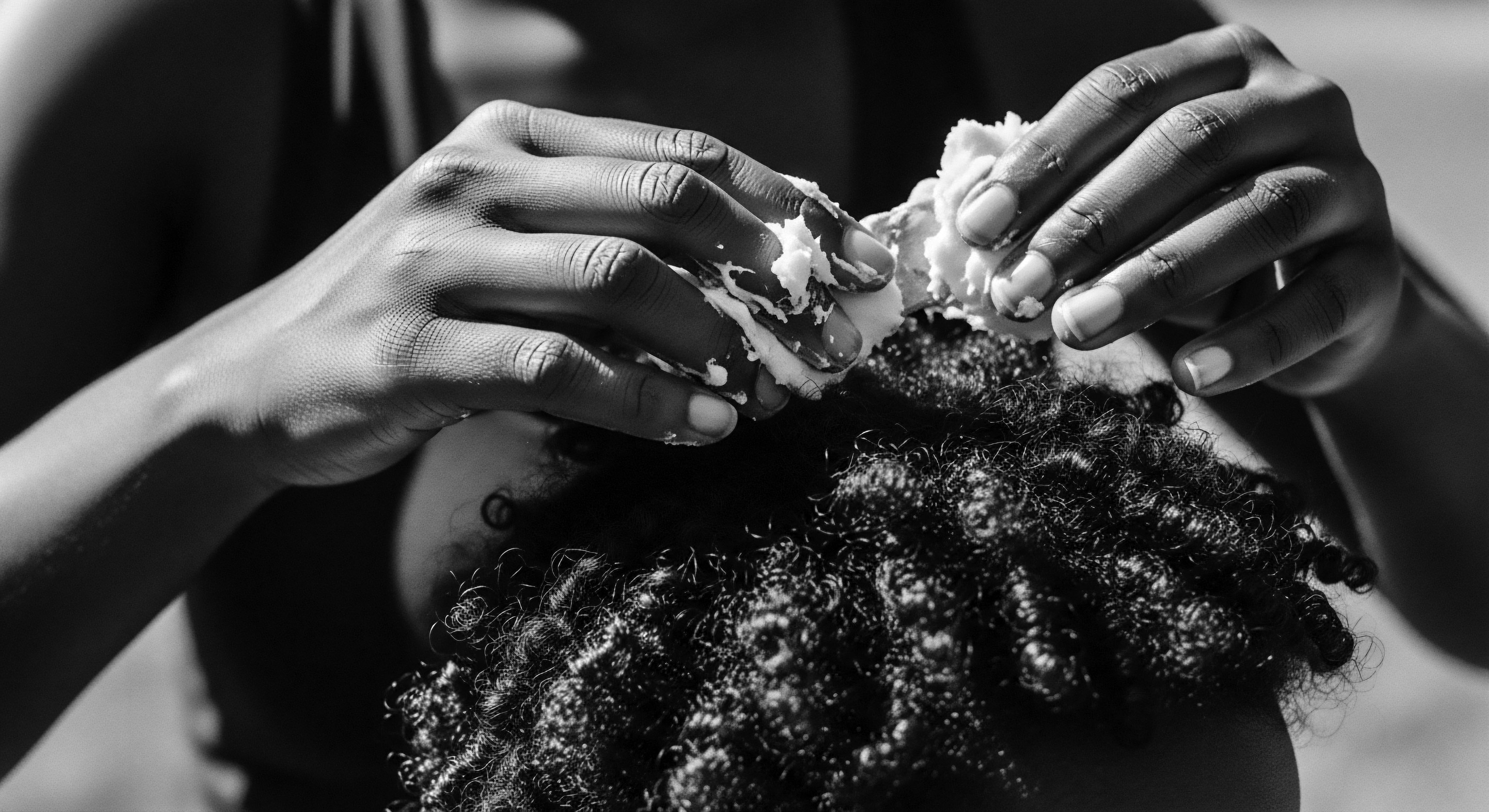
Reflection on the Heritage of Ancient Hair
The journey through the meaning of Ancient Hair, from its elemental biological origins to its complex role in shaping identity and future possibilities, culminates in a profound understanding of textured hair as a living legacy. Each curl, coil, and wave carries within it the echoes of ancestral wisdom, the resilience forged through generations of care, and the stories of communities who honored hair as a sacred extension of self. This is the very Soul of a Strand, a delicate yet powerful connection to a heritage that continues to inspire and sustain.
Roothea’s living library, through this definition, seeks to illuminate the unbroken chain of knowledge that binds us to our past. It is a reminder that the practices we employ today, the ingredients we seek, and the communal bonds we share through hair care are not isolated acts; they are resonant continuations of ancient rituals. The celebration of textured hair, in its myriad forms, becomes an act of reverence for those who came before us, who nurtured their strands with natural remedies and styled them with artistry, even in the face of adversity.
As we look to the future, the lessons embedded within Ancient Hair call upon us to honor authenticity, to seek wisdom in tradition, and to recognize the profound power of self-acceptance. It encourages us to approach our hair not merely as a physical attribute, but as a vibrant repository of history, culture, and spirit. This enduring heritage serves as a guiding light, reminding us that true beauty springs from a deep appreciation of our roots and an unwavering celebration of our unique, inherited brilliance.
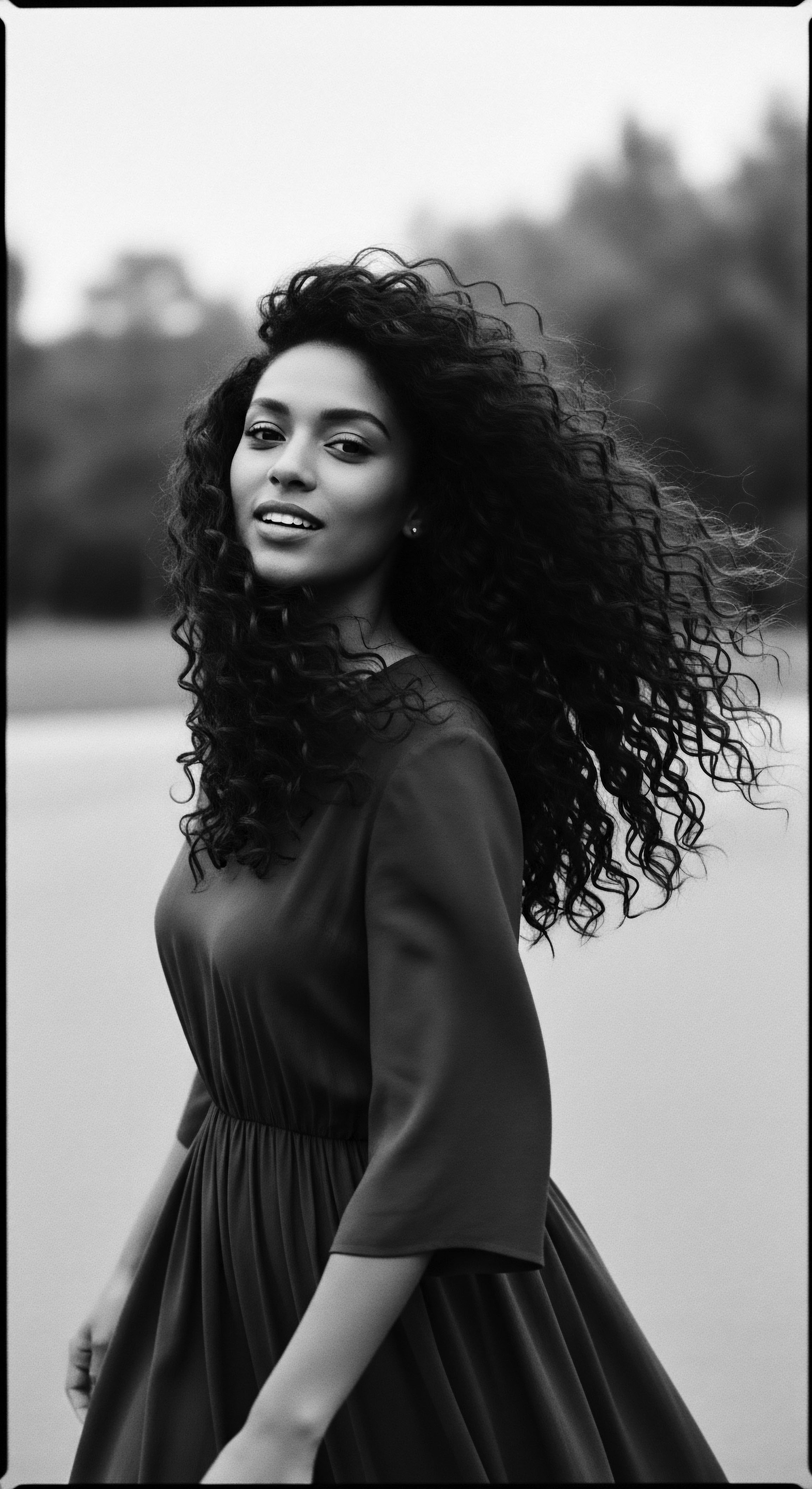
References
- Adebayo, O. J. Oluwa, O. K. Omolokun, K. T. Ogbe, A. A. & Adebayo, O. A. (2024). Cosmetic Ethnobotany Used by Tribal Women in Epe Communities of Lagos State, Nigeria. Journal of Complementary Medicine & Alternative Healthcare, 12(4), 555845.
- BLAM UK CIC. (2022, September 15). The history of Black Hair. Retrieved from https://blamuk.org/the-history-of-black-hair/
- Cosmos Magazine. (2023, April 9). New hair testing uncovers drug use in Bronze Age cultures. Retrieved from https://cosmosmagazine.com/history/archaeology/new-hair-testing-uncovers-drug-use-in-bronze-age-cultures/
- Leidenanthropologyblog. (2017, March 2). ‘Hairstyle Politics’ ❉ Decolonizing Beauty Standards. Retrieved from https://leidenanthropologyblog.nl/2017/03/02/hairstyle-politics-decolonizing-beauty-standards/
- Omotoso, S. A. (2018). Gender and hair politics ❉ an African philosophical analysis. Africology ❉ The Journal of Pan African Studies, 12(8), 8.
- Quampah, B. (2024). Unveiling the art of Indigenous threaded hairstyles in some selected areas in Ghana. African Journal of Applied Research, 10(2), 258-282.
- Rosado, S. D. (2007). Nappy hair in the diaspora ❉ Exploring the cultural politics of hair among women of African descent (Doctoral dissertation, University of Florida).
- Sieber, R. & Herreman, F. (Eds.). (2000). Hair in African Art and Culture. Prestel.
